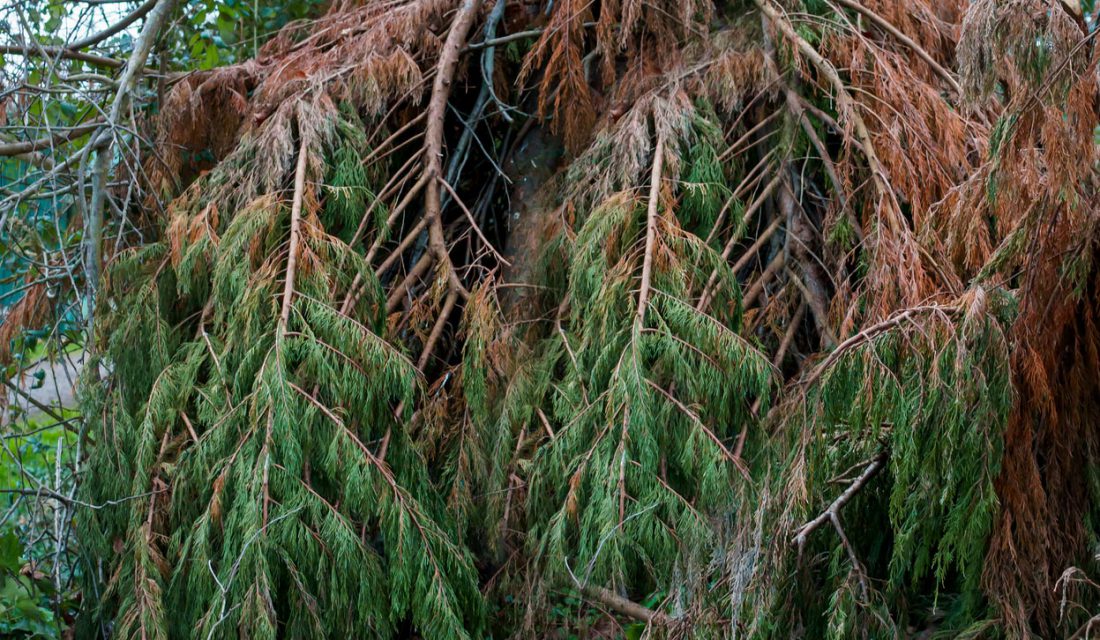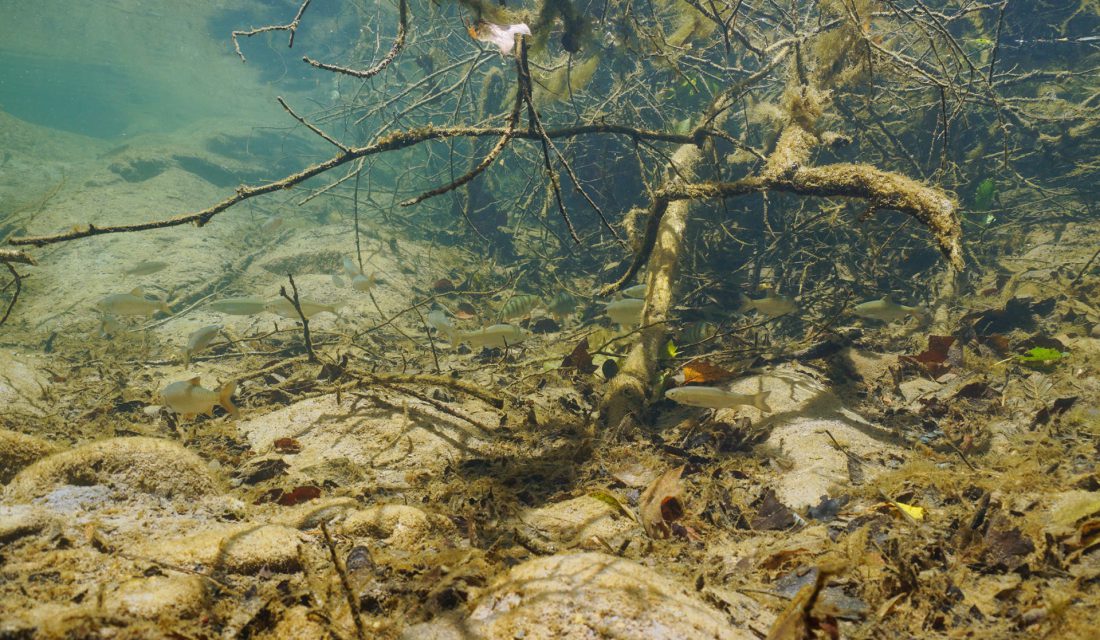What may be an eye-sore for us, is a home for wildlife.
This winter, Canada’s wildlife will not only be searching for the rich, fatty cuisine supplied by your feeder, but also nooks and crannies in which to spend a cozy night, hide from a bothersome predator or escape mood-dampening weather conditions.
So before you toss your old Christmas tree by the roadside, consider how it could have a second life helping birds, small mammals and reptiles survive cold Canadian winters and the hot summer days to come. Recycling your tree into a brush pile on your property is a great way to help your wild neighbours in need of dense cover, especially in areas where natural shelter has been removed for agriculture or urbanization.
How to Create an Effective Brush Pile
 Brush piles have two basic parts: a foundation and a brushy top. Together these two parts create a complex topography that serves the many needs of wildlife for shelter. The foundation provides spaces for denning, resting and nesting, as well as tunnels for movement. The brushy top provides shade, shelter from harsh weather and concealment from predators.
Brush piles have two basic parts: a foundation and a brushy top. Together these two parts create a complex topography that serves the many needs of wildlife for shelter. The foundation provides spaces for denning, resting and nesting, as well as tunnels for movement. The brushy top provides shade, shelter from harsh weather and concealment from predators.
There are numerous methods of stacking the brush to best achieve these results:
- Easy: Stack the branches in a tent-like formation with a singular pinnacle.
- Moderate: Criss-cross eight logs that are 10 to 15 centimetres in diameter and 45 to 60 centimetres long to make a sturdy base.
- Hard: Make a foundation from stones (20 to 30 centimetres in diameter) arranged in three loose piles, each at the corner of an imaginary triangle. Add some PVC pipes or drain tiles in between the stone piles and you’ve just provided small mammals with escape tunnels. After the base has been finished, add the brush. Angle branches differently to lock the structure together and create air spaces — stout branches first, thinner ones last. Continue until the pile is about two to two-and-a-half metres high. Then add branches to the sides to create stability, until the pile is two to two-and-a-half metres wide as well.
Position your brush pile within or near woods or in “edge” habitats. This means between two different habitats, such as the edge between a forest and a clearing or field, between a stream and marsh, near land that’s being cleared or partially underwater along the edge of a pond.
Some additional planning will make your brush pile the hottest hangout in the neighbourhood:
- Ensure a section of your brush pile gets direct sunlight and you will attract animals that like to bask.
- Add stone piles along the edges of the brush pile to act as basking sites.
- Encourage fruiting vines and flowering plants to sprawl through your brush pile to add density and stability and attract pollinators and songbirds.
- Keep it away from snags (standing dead trees), where raptors often scan for ground prey and launch their attacks.
- Cover the top with evergreen branches from your Christmas tree to provide a snow and ice barrier.
- Add new brush to the top every few years to replace settled and decayed material.
- Place it well away from your house to discourage wild tenants from moving in.
Consider Underwater Brush Piles
 Brush piles are most often thought to benefit small land mammals like rabbits, but anchor them in water and they’ll become havens to fish as well, especially to those living in lakes or shoreline areas that have lost aquatic plants to development or other human-induced changes.
Brush piles are most often thought to benefit small land mammals like rabbits, but anchor them in water and they’ll become havens to fish as well, especially to those living in lakes or shoreline areas that have lost aquatic plants to development or other human-induced changes.
Many fish species spend more of their time near cover than in open water, including crappie, bass and channel catfish. An underwater brush pile is an all-in-one attraction that provides them with shade, rest areas and places to spawn and escape predators. Once brush piles start supporting populations of aquatic larval insects, they become a source of fish food as well.
Remember that anything you add to the water will change the aquatic ecosystem, so always check first with local conservation authorities, such as government agencies, shoreline conservation groups and cottage or lakeholder associations before you sink a brush pile. These groups can give qualified advice to ensure you don’t damage any important natural features or sink plant material that isn’t locally native.
Underwater brush piles can be made from many different materials, but natural materials like wooden stakes, logs, brush and tree limbs are best. You can even use boughs from your old Christmas tree. And the bushier the brush, the better; orange, black locust, hickory and oak work well, as do cedars. Anchor them underwater with a concrete block attached with plastic banding or polypropylene rope. Natural brush piles have to be replaced periodically; softwoods decompose underwater in about seven years but some hardwoods can last up to 30.
A special note: Don’t cut down healthy trees for an underwater brush pile; use dead branches, your old Christmas tree, discards from a lumber plant or limbs that you or a neighbour felled because they were in danger of falling on a house.
Put the brush pile in an underwater place that already supports fish activity, such as a cove, off of a shelf or drop-off, off of a point or along the edges of old stream channels. If you have a cottage on a lake, collaborate with other neighbours who care about fish habitat and place one brush pile for every two to three acres of water.
Don’t sink the brush pile too deep; less than five metres in large lakes and no deeper than three to four metres in small lakes and ponds. This is because oxygen levels within the lake in the summer drop to almost zero in the bottom halves of lakes, meaning fish cannot inhabit this part of the lake in summer. Keeping your brush pile high enough will ensure they can use it all year long. Sink the pile at least a metre-and-a-half below the surface and it won’t interfere with boats.



